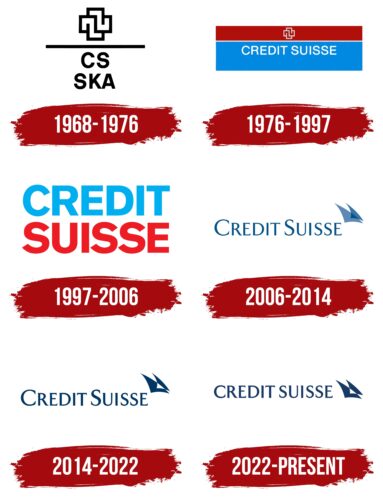Credit Suisse: Brand overview
| Founded: | 1856 |
| Founder: | Alfred Escher, Allgemeine Deutsche Credit-Anstalt |
| Headquarters: | Zürich, Switzerland |
| Website: | credit-suisse.com |
Meaning and History
1968 – 1976
1976 – 1997
1997 – 2006
2006 – 2014
2014 – 2022
2022 – today
Credit Suisse color codes
| Dark Midnight Blue | Hex color: | #173964 |
|---|---|---|
| RGB: | 23 57 100 | |
| CMYK: | 77 43 0 61 | |
| Pantone: | PMS 648 C |










